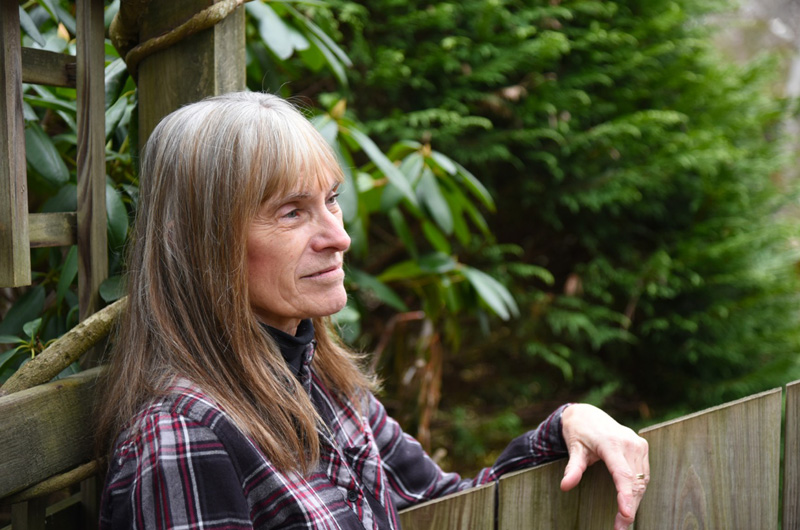Six or seven years ago, author Susan Wilson was walking down School street in Edgartown, talking to her agent on the phone. Ms. Wilson had always wanted to succeed as a writer, and a decade earlier she had begun applying herself in earnest to her work. She had finished five novels, but the latest one “wasn’t going anywhere, and my agent was shopping it around,” she said.
“I was thinking, maybe I should just give it all up,” she remembered. “My agent was basically talking me down from the ledge. And she said, ‘You know, dog stories are getting very popular.’”
It was a lightbulb moment.
“I’ve always been an animal person,” Ms. Wilson said. “What inspired me to write when I was a little kid was dog books. If it had a dog in it, I read it.”
Beginning with a voice in her head, that of a pitbull named Chance who had been rescued from the brutal world of dogfighting, Ms. Wilson sat down and created One Good Dog. The story of Chance and Adam March, who rescues Chance and by so doing rescues himself, became a New York Times bestseller.
This spring, Ms. Wilson’s newest novel and her 10th book, Two Good Dogs, follows more developments in the life of Adam March and his battle-scarred pitbull. This time, however, Adam and Chance are catalysts for healing in the lives of others: a 14-year-old girl named Cody, who’s having a hard time recovering from her father’s death, Cody’s frazzled mother, Skye, who thought the answer to her problems would be buying an old motel in the Berkshires, and Lucky, another pitbull who, like Chance, has a shot at a new life quite different from his dogfighting past.
Two Good Dogs joins an eclectic modern phenomenon of novels, crime stories and suspense in which the animals act to move the plot along, sometimes narrating all or part of the story. Rita Mae Brown’s cat detective, Sneaky Pie, and Lillian Jackson Braun’s The Cat Who... series lead the pride of feline-detective books. There is also a pack of dog-detective novels and dog-narrated bestsellers, as in W. Bruce Cameron’s A Dog’s Purpose, and Garth Stein’s The Art of Racing in the Rain.
In these books, each author makes a decision about how to depict the animal’s point of view. Ms. Braun’s cats don’t speak, and the question of whether they really help solve the mystery, or their doting owner just believes they do, is up to the reader to decide. On the other end of the spectrum are the dog narrators of Mr. Cameron and Mr. Stein, who tell the whole story.
Susan Wilson aims neatly for the middle: Chance talks to the reader, but his voice is one among several. “You need to have varying viewpoints,” Ms. Wilson said. “I like to have a change of voice, a change of scenery.”
Chance tells his part, as do Adam March, Cody Mitchell and her mother, Skye. The dog story frames the other stories packed within the novel like nesting dolls. Two Good Dogs contains a crime story, a redemption-of-a-lost-soul-story, a mother-daughter reconciliation story, and a potential romance.
Will the man who killed Cody’s father catch up to her and kill her, too, before Cody gives up the secret of his identity? Will the boy found nearly dead of an overdose turn his life around and deserve his dog again? And of course, will Adam March and the hotel owner, Skye Mitchell, who tack hesitantly toward each other throughout the book, finally connect?
And will Two Good Dogs end up on the bestseller list, as well? As a famous dog detective once said, “Rithout a doubt.”







Comments
Comment policy »